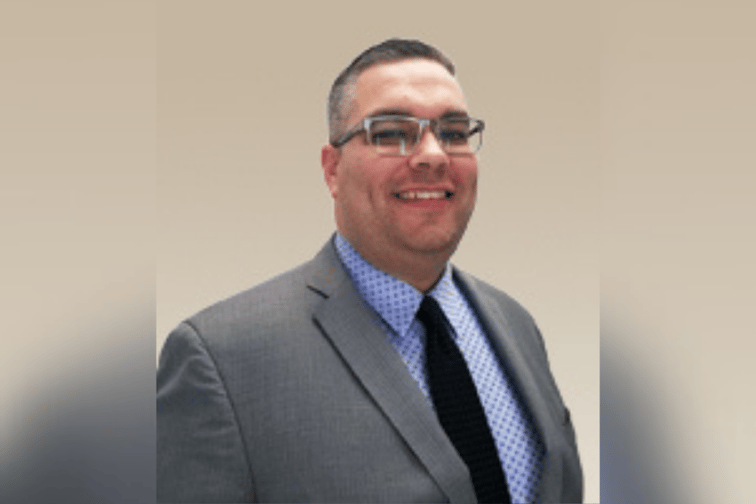

This article was produced in partnership with MyInsurance Broker
Karen Surca, of Insurance Business Canada, sat down with Simon Walker, special lines manager with MyInsurance Broker, to discuss the need for special occupancy and comprehensive insurance coverage for commercial contractors to be firmly in place before a claim is made to avoid a financial sting.
Hindsight is 20/20, and this simple truth applies aptly to the realm of commercial property insurance.
When claims happen, and they do, it becomes crucial to have had adequate insurance in place from the outset – coverage that has taken into account what those claims costs could amount to.
According to Simon Walker (pictured), special lines manager with MyInsurance Broker, there are specific occupancy and insurance coverage areas that need to be addressed to help minimize the financial sting of a damage claim for a commercial property.
For MyInsurance Broker, these focus areas boil down to fire protection for a commercial property, attention to maintenance and repair standards, and being aware of liability exposures, as well as estimated replacement costs.
“Beyond these elements, we worry about frequency and severity. This is primarily what insurance is all about,” Walker explained.
“The difficulty here is that if you have frequency on its own, it is manageable. If you have severity on its own, it is manageable. If you have them both together it is extremely hard to handle because you can’t correctly predict.”
With the sheer increase in the number of natural disasters and weather events, coupled with the extreme nature of them, insurance providers are finding it increasingly difficult to predict adequate insurance coverage for commercial properties. There is insufficient historical data available to use as a compass.
Walker pointed out that often “the reinsurance market, opposed to standard insurers, typically take on catastrophic loss, trying to integrate with the local insurance market.”
Bearing the brunt of these claims has forced reinsurers to raise their rates, which has a direct impact on the rates standard insurers will charge.
“It’s a butterfly effect. We do not live in a closed insurance system, it is a larger [insurance] ecosystem,” Walker explained.
Walker is quick to highlight that, unfortunately, far too often insufficient insurance coverage is taken out to fully cover rising replacement costs, due in large part to inflationary factors and the increase in labor and material costs.
When a claim is made towards the commercial property, the business may face a financial shock. If the commercial property was not adequately covered when the insurance was first taken out, a business may face a financial penalty.
The rule of thumb to avoid being underinsured is to make sure a commercial property is insured at its value, or at least near value. This means having the commercial property inspected to determine its value at the outset.
Another issue, Walker highlighted, could be a failure to keep an eye on the escalating cost of the commercial property.
When determining adequate insurance coverage, it is imperative to keep in step with property price increases, labor replacement costs, and general inflation. If not, companies may be left paying out of pocket when a damage claim is made.
“If you only insure what you think is going to be your next big loss you are artificially exposing the insurance company to 100% loss potential. Whereas if your insurable value is only exposed at 25% out of a million dollars, then this is a loss of only 25%,” Walker stated.
COVID has only made this problem worse with “the trouble being that the supply and demand for raw materials have changed,” Walker said.
“So, if you have to calculate the replacement cost of rebuilding, the costs may be higher, and the prices are changing quite wildly,” he said.
With supply chain disruptions impacting materials and increasing replacement costs, Walker advises clients to change the value of the property to better reflect the shifting market.
Another key area that can put money back in the pockets of the insured is to ensure that commercial properties are properly prepared for any fire risk.
Walker points to the type of construction of the commercial property, such as fire-resistant construction, as well as the installation of functioning fire alarms, sprinkler systems, and fire coating as ways to help mitigate liability claims.
Walker also notes the role that proper maintenance and repairs play.
“Keeping floors clean and well maintained and general repairs,” Walker said, form a part of the approach businesses should take to ensure claims are kept to a minimum.
As a commercial line insurance provider, MyInsurance Broker continues to make risk improvement recommendations a top priority.
When asked to pick his top three Walker does not hesitate.
“I would say that you must get the building inspected to give you a current value from a professional party,” he said.
“Then I would say that you ensure that you have business continuity plans if you have either frequent or severe losses.”
The third recommendation speaks to the increasingly prominent role that technology is playing in loss prevention.
“I would look at additional technology because these days there are all kinds of really cheap and easy to implement sensors,” Walker stated.
Ultimately, any measure that helps to predict future events, as well as following the common-sense guidelines set out by insurance providers, can go a long way towards offsetting the sometimes-high cost of claims.
Walker acknowledges that challenges remain, however.
“The data we have is based on variables that are consistently changing,” Walker stated.
“We need to be able to try to figure out how to marry different variables in such a way that we can do a better job of predicting different types of events.”
Simon Walker (RIBO, CAIB, CIP, CRM) has been a broker placing business directly into Lloyd’s as an Open Market Correspondent for more than a decade. His specialties include cyber, technology, and manufacturing.
